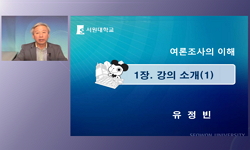Josa(朝謝) is a Sino-Korean word, which originally referred to ``to pay one`s reverence and offer cordial thanks``. Its most popular use meaning was ``paying his low reverence and offering cordial thanks to his highness for being appointed as an off...
http://chineseinput.net/에서 pinyin(병음)방식으로 중국어를 변환할 수 있습니다.
변환된 중국어를 복사하여 사용하시면 됩니다.
- 中文 을 입력하시려면 zhongwen을 입력하시고 space를누르시면됩니다.
- 北京 을 입력하시려면 beijing을 입력하시고 space를 누르시면 됩니다.

조사(朝謝)의 사용 의미와 문서식(文書式) = Meaning in Use as a Word and the Standard Style of a Korean Old Document, Josa
한글로보기https://www.riss.kr/link?id=A99606201
- 저자
- 발행기관
- 학술지명
- 권호사항
-
발행연도
2013
-
작성언어
-
- 주제어
-
KDC
900
-
등재정보
KCI등재
-
자료형태
학술저널
-
수록면
1-30(30쪽)
- DOI식별코드
- 제공처
- 소장기관
-
0
상세조회 -
0
다운로드
부가정보
다국어 초록 (Multilingual Abstract)
Josa(朝謝) is a Sino-Korean word, which originally referred to ``to pay one`s reverence and offer cordial thanks``. Its most popular use meaning was ``paying his low reverence and offering cordial thanks to his highness for being appointed as an official subordinate. It is quite different from the word seogyeong(署經) which means the whole procedure for checking ability or capacity of an official subordinate or a regional governor scheduled to becoming appointed. And it sometimes had been used for representing the documents delivered to persons or government office concerned after doing seogyeong. Lately it was even used for representing one of appointing documents or appointing document itself. The existing period of josa documents preserved can be classified into three parts. The first period dated back from the year 1376 AD to 1393. It shows that the josa documents were written in Korean idu sentences. The second period extended from 1402 to 1456. In this period the standard style of josa documents was somewhat changed, for examples; methods of signing downwards from the top level to the lower level officials, writing and sealing the title name according to the documents`` delivery devision, borrowing a few Chinese government official sentences imun(吏文), and so on. The last third period spanned 9 years from 1457 to 1465. But the standard style of this last period was not neatly confirmed and idu elements were totally disappeared. It is true that the appointing documents comprised gwangyo(官敎) and josa documents in the late Goryeo and the early Choseon dynasty. In spite of this fact josa dodument is essentially one of records for noticing the appointment. There were jikcheop(職牒) documents which worked as the other appointing documents in those times. It should be explained that what jikcheop documents were and what relationship they have with Sacheop(謝牒), which were once another name of josa documents.
동일학술지(권/호) 다른 논문
-
- 한국고문서학회
- 심재권 ( Jae Kwon Shim )
- 2013
- KCI등재
-
조선시대 향촌 제 조직(組織)과 규약(規約)의 계약(契約) 적 성격
- 한국고문서학회
- 정진영 ( Jin Yong Jung )
- 2013
- KCI등재
-
조선후기 한성부(漢城府)에서의 호구단자(戶口單子), 준호구(準戶口) 작성 과정에 관한 再考
- 한국고문서학회
- 문현주
- 2013
- KCI등재
-
조선 후기 경아전(京衙前) 서리(書吏) 가계 사례 연구:신득린(申得麟)(1734~?) 가계
- 한국고문서학회
- 김두헌 ( Doo Hean Kim )
- 2013
- KCI등재




 KCI
KCI KISS
KISS







